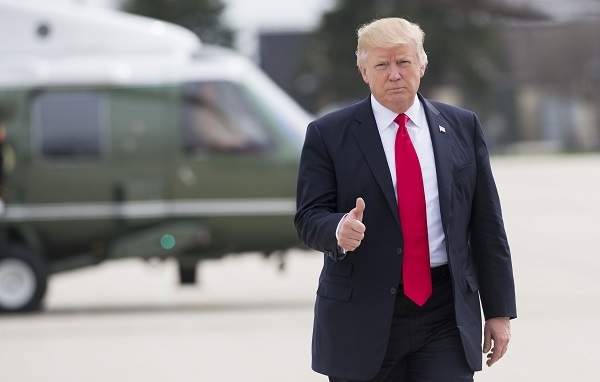To many, for the past 10 days the Korean Peninsula appeared to have been edging toward the brink of war.
Soon after bombarding Syria and Afghanistan with missiles and a gigantic bomb, the US said it had ordered its flagship aircraft carrier strike group, which was already here last month for a joint drill with the South Korean military, to head back toward the peninsula.
The announcement triggered a frenzied chain reaction throughout the region. As President Donald Trump and other top Washington officials hinted at possible military action, North Korea hit back with a string of threats of a pre-emptive strike and even nuclear war. China, which had just wrapped up a summit with the US, was seen scrambling to dissuade Pyongyang from testing a nuclear device or an intercontinental ballistic missile for the April 15 birthday of late founding father Kim Il-sung. Japan has even issued a travel advisory for South Korea and convened a National Security Council meeting to discuss plans to evacuate its some 60,000 nationals residing here.
 |
US President Donald Trump gives a thumbs-up as he walks to Marine One at General Mitchell International Airport in Milwaukee, Wisconsin, April 18, 2017, prior to returning to Washington following a trip to Kenosha, Wisconsin, to speak at Snap-On Tools. (AFP-Yonhap) |
The world was then rattled by the revelation that the USS Carl Vinson was not returning to waters off the peninsula, or at least when the US said it was. While the aircraft carrier sailed in the opposite direction and took part in a training in Australia as planned, Trump administration officials failed to correct the prevalent reports on its rerouting, calling it a “prudent” step in light of urgent threats of North Korea. From Trump himself to National Security Adviser H.R. McMaster to Secretary of Defense James Mattis to White House press secretary Sean Spicer, they delivered the same, misleading message.
Some may believe it was a deliberately choreographed misrepresentation. Others speculate the “armada” had been meant to change course, but then Washington decided to delay the timing to buy time for China after Trump’s phone call with President Xi Jinping on April 11. Or else, it was plainly a result of miscommunication, as CNN reported, citing a senior administration official who blamed on the White House’s “lack of follow-up with commanders” over the aircraft carrier’s movements.
But the series of developments and ensuing tension have stoked jitters among not only ordinary South Koreans but also Seoul officials. Ahead of a May 9 presidential election, debate heated up over a possible US pre-emptive attack against the North, with leading candidates warning against any unilateral action. Asked whether the Trump leadership’s volatility and lack of concrete, transparent policy actions would aggravate the security situation here, a Foreign Ministry official said, “Like it or not, I guess that’s his way of statecraft.”
The Trump administration’s carrot-and-stick approach toward North Korea, peppered with bellicose rhetoric and suggestive military moves, may eventually prove effective in altering leader Kim Jong-un’s calculations. Upbeat signs have indeed been seeping out of China, with its flag carriers suspending flights to North Korea and state media calling for a halt in oil supplies and a further financial squeeze.
Prudence, however, cannot be ensured without precautions to avoid a direct conflict and coordination with allies faced with the threats. Any sudden escalation in saber-rattling coupled with misleading statements could spawn a needless flare-up in tension and public anxiety. And in a worst-case scenario, it may culminate in a miscalculation and armed clash, which no country, and no people in the world could afford.
By Shin Hyon-hee (
heeshin@heraldcorp.com)







![[Today’s K-pop] Blackpink’s Jennie, Lisa invited to Coachella as solo acts](http://res.heraldm.com/phpwas/restmb_idxmake.php?idx=644&simg=/content/image/2024/11/21/20241121050099_0.jpg)
